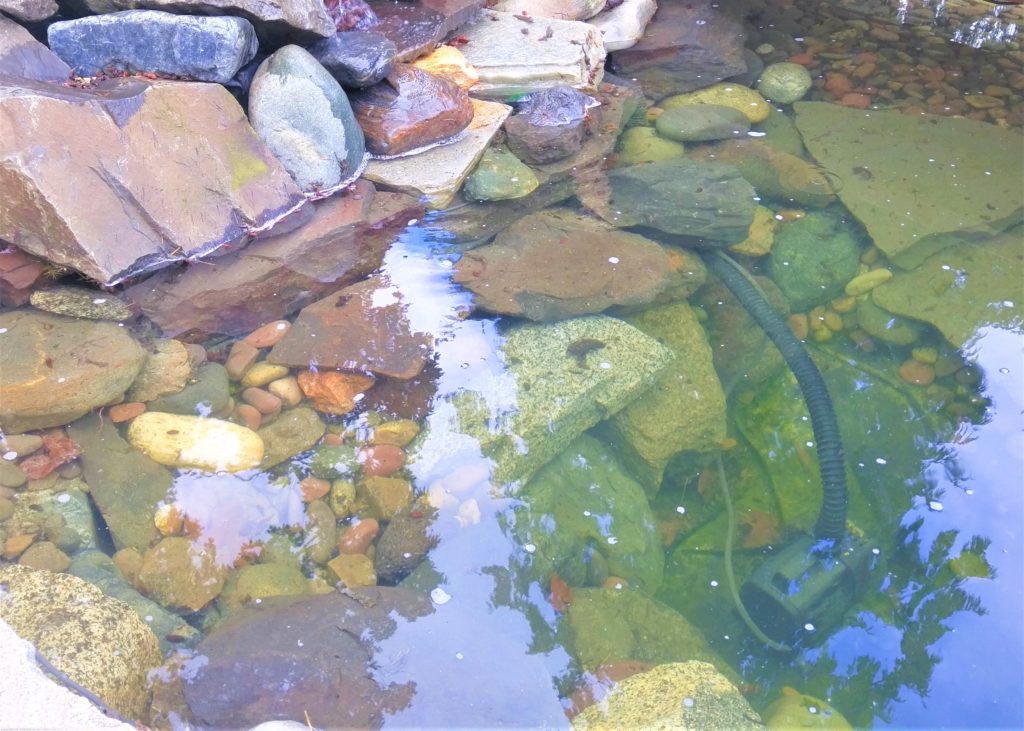Can You Add Chlorine to a Pond as an Easy Way to Keep It Clear?

Garden ponds are difficult to keep clear, especially in sunnier months. Algae forms quickly in sunlight and warm water. Algaecides don’t always work as quickly and efficiently as one might hope. Can you add chlorine to your garden pond as an easier way than algaecides to stem algae growth?
Short Answer
Yes, you can chlorinate your garden pond, as long as you do not intend to grow plants or harbor fish in the pond. It may also cause your pond liner to deteriorate.
Details
As soon as you build a garden pond, the battle begins. You’re battling raccoons that want to bathe in your pond, leaves that want to blanket the surface and clog the pump and filter, sunlight that wants to degrade your liner, and that’s just the start. More than anything, there is algae.
After you discover algae blossoming and even forming strings and blankets, you might have been thrilled to discover algaecides. These biosafe products control algae, without killing fish and plants.
In the war against garden pond algae, algaecides are slower acting and less effective compared to chlorine. Algaecides are the pea shooter in this war; chlorine is the cannon. If you are accustomed to the slow and often inexact process of slowly adding algaecide to your pond, you will be amazed at the rapid clarifying properties of chlorine. After all, there is a reason why chlorine is added to swimming pools: it works.
Qualifiers
Adding chlorine to a garden pond results in clear water but it comes at a price:
- Algae is organic, a living thing. Chlorine can kill organic matter. Thus, it doesn’t just kill algae; in sufficient quantities, it will kill other living things. This means that items you intend to grow, like water plants or koi, cannot live in a highly chlorinated environment.
- A residual killing effect is that the chlorine in your pond will snuff out other living things that you do not intend to live in your pond. You may find other chlorinated victims like slugs and snails floating in your pond.
- The logistics of adding chlorine to a pond are not easier than adding an algaecide. You can’t just dump it in and be done. You still need to dilute it and spread it evenly.
- Unless your pond is concrete-lined, it is probably made of PVC or EPDM rubber. The elevated chlorine levels may speed up deterioration of your liner. A 2011 study by Japanese chemists found that water chlorinated above levels normally found in city water systems caused physical flaking and mechanical breakdown of EPDM rubber packing (packing refers to the gaskets found in faucets that prevent leaks). Residual chlorine caused EPDM packing to stiffen, crack, then break up into 1 mm particles.
- Pond pumps have plastic parts that might be affected by elevated chlorine levels.
Trusted Sources
Haruhiko Kikkawaa, Tsutomu Nakamura, Kenichiro Hyakutake, Tomoko Kobayaskhi, Shinji Ueda, Ryuji Miyagawa, and Yoshito Ohtake: Degradation Mechanism of EPDM Packing with Chlorine in City Water